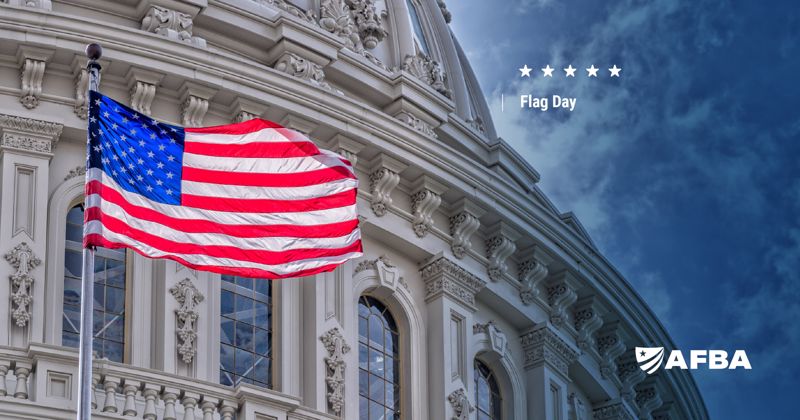Flag Day, also called National Flag Day, commemorates the date in 1777 when the United States approved the design for its first national flag. In 1916, President Woodrow Wilson formally established June 14 as Flag Day on the anniversary of its creation. The U.S. has since celebrated the day on the same date every year. Congress recognized Flag Day as a national observance in 1949.
For 2023, we’ll discuss the meaning behind the holiday before detailing how to respectfully display and handle the American flag, including how to dispose of a damaged one.
The American Flag took a couple of tries to get right
When the Colonial armies were fighting the British during the Revolutionary War, there was no official American flag they could fly. Instead, regiments designed their own flags to be flown during battle.
This didn’t last long: In 1775 — the same year the War began — the Second Continental Congress convened. On the agenda was coming up with a flag that could be flown for the first Continental Army across the beginnings of the United States of America.
Referred to as the Continental Colors, the flag consisted of alternating red and white stripes accompanied by a Union Jack in the corner. However, many disapproved of the design, including George Washington, objecting that it was too similar to the British flag. When Congress met again in 1777, they reworked the flag to include 13 stars and 13 stripes. This was the first official national flag.
 “The appearance of the U.S. Department of Defense (DoD) visual information does not imply or constitute DoD endorsement.”
“The appearance of the U.S. Department of Defense (DoD) visual information does not imply or constitute DoD endorsement.”How to properly display the American flag
Public Law 94-344, also known as the Federal Flag Code, formally establishes the rules regarding how to fly and handle the American flag. There are no federal penalties for violating this code, but states may impose their own. If you plan to display the flag, here are a few guidelines to do it respectfully:
The flag must be displayed where there’s light
Display a flag outdoors from sunrise to sunset. Indoors, you can show it at night, but only if it’s exposed to proper lighting.
Take the flag down during harsh weather
Don’t display the flag during wind storms, snow or rain, as these elements can damage the flag. All-weather flags are an exception, as these are highly resistant to weather damage.
When hoisting the flag, do it rapidly; when lowering it, do it respectfully
How you hoist and lower the flag is meaningful in its own right. You should raise it powerfully and lower it ceremoniously.
If you cross the American flag with another, the former should face a specific direction
Facing away, you should hoist the American flag so it faces the right. This would look like it’s facing the left from an observer’s point of view. Also, the American flag’s staff must be in front of the other’s.
Dispose of a flag in poor condition with integrity
If the flag is no longer fit to fly, you must dispose of it honorably. Ideally, you should burn it. A dignified burial is also acceptable. Never throw an American flag in the trash, no matter what condition it’s in.
The American flag is legally considered a living symbol; treat it appropriately
Many people enjoy displaying their own American flags both indoors and out. If you, too, wish to fly it, follow all local laws and ensure you treat it with the Federal Flag Code in mind.
The American flag is much more than just cloth; it’s a living symbol, according to the law. It should be treated as such — and you should always fly it with pride.

